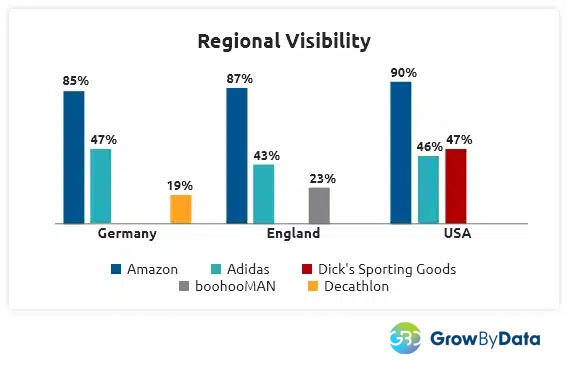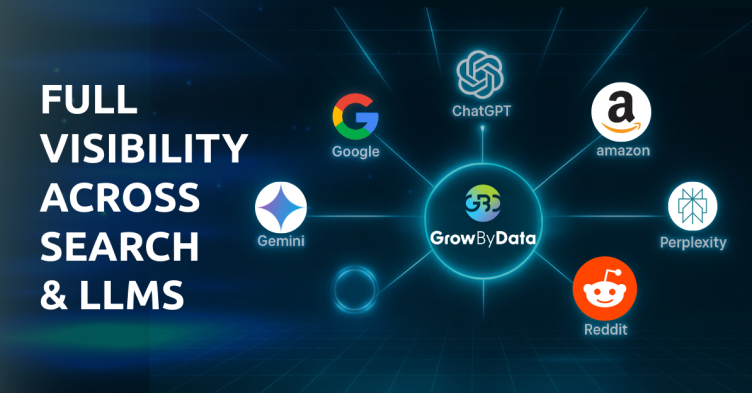In today’s competitive market, brands face a multitude of challenges. Even with the array of tools available to address these hurdles, marketers frequently feel inundated by the abundance of tools and data. While existing tools offer extensive data on keywords, ads, products, and SERP Features, marketers grapple with extracting meaningful insights, which hinders their decision-making process. Hence, brands need a holistic search solution that provides strategic insights and improves Google’s performance. The objective is to discover a time-efficient solution that delivers valuable market insights.
A Google brand audit assesses a brand’s performance on the platform by examining various factors such as keyword visibility, product listings, ad targeting, ad spending, and more. The objective is to pinpoint areas that can be optimized in order to increase impressions, clicks, sales, and return on investment (ROI).
Performing a thorough brand SWOT analysis proves to be an immensely effective strategy for evaluating your brand’s performance on Google. This analysis empowers you to gauge your brand’s effectiveness, make well-informed decisions, and stimulate growth by enhancing your brand performance.
Discover the optimal method for conducting a brand SWOT audit on Google.
Table of Contents: Show
Using the Marketing Intelligence solution, our Google platform experts conducted a brand SWOT analysis for Adidas, a prominent athletic brand.
We analyzed over 2 million ads and SERP listings across 200 apparel-related keywords in multiple countries, including the United States, Germany, Brazil, England, and Japan with our Local/International SERP Monitoring.
The results of this analysis are insightful and can provide valuable guidance for auditing your own brand.
In terms of brand visibility on Google Shopping ads, Adidas stands out. They exhibit exceptional performance with a remarkable 79% visibility rate in Brazil, establishing their dominance in that market. Meanwhile, in Australia, Adidas secures the second position, boasting a visibility rate of 58% across keywords. They closely trail the leading competitor, Amazon, which holds the top spot with a 67% keyword visibility in the region.

Adidas has made deliberate investments in Google shopping ad extensions, such as “Curbside Pickup,” “Free Shipping,” “Coupons,” and “Sale” to engage and entice shoppers effectively. This strategic move allows Adidas to set itself apart from competitors while delivering precise messages to its intended audience.
As illustrated in the chart provided below, Adidas takes the lead in the adoption of ad extensions, boasting an impressive 72%. This not only grabs the attention of potential shoppers but also significantly enhances the click-through rates for their advertisements.

Adidas establishes a benchmark in ratings, with a remarkable 95% of their ads earning ratings exceeding 4. This outstanding accomplishment outshines competitors such as Amazon (90%) and Dick’s Sporting Goods (81%). These impressive ratings serve as a testament to the quality of Adidas’ advertisements, fostering trust among consumers and, as a result, driving heightened engagement with their products.

Above-the-fold advertisements play a pivotal role in achieving substantial impressions, clicks, and conversions, rendering them a critical performance metric for campaign success.
When it comes to above-the-fold visibility on unbranded keywords, Adidas lags behind its nearest competitors. In this context, Amazon takes the lead, boasting a 32% above-the-fold visibility on branded keywords and a 22% presence on unbranded keywords. While Adidas performs admirably with a 15% above-the-fold visibility on branded keywords, their visibility takes a notable dip to a mere 3% on unbranded keywords.

Regional Visibility
Adidas exhibits lower regional visibility compared to its competitors in vital markets like the United States (46%), England (43%), and Germany (47%). This implies that Adidas might be overlooking a substantial pool of potential customers, potentially resulting in revenue loss.

Adidas product ads have an average rank of 11, which is comparatively low compared to its biggest competitors. Zappos, for instance, has an average rank of 6, while Amazon holds a rank of 8. This lower rank makes it challenging to fulfill customers’ needs effectively amidst the wide array of competitors’ offerings. As a result, customers may need to click multiple times to find the right product.

According to our Brand SWOT analysis, the Google Popular Products SERP feature appeared in 72% of the keywords that we analyzed. However, Adidas was only visible in 30% of that feature. Amazon, on the other hand, takes the lead with its ads being visible on 58% of Popular Products. This feature enables users to easily access the most popular products within search results easily, thereby enhancing the visibility of ads and potentially resulting in an increased CTR.
Adidas offers 64% of its products at a price below $100, whereas Amazon and Dick’s Sporting Goods have 86% and 75% of their products priced below $100, respectively. Here, this pricing strategy gives Adidas a competitive edge by offering more affordable options compared to its rivals. As a result, they can attract a larger customer base, leading to increased sales and revenue for their stores.

As previously discussed, identifying relevant keywords is crucial for improving visibility and driving traffic. Our study indicates that Amazon has low visibility on 20% of the keywords, including terms like ‘active wear’, ‘gym tops’, ‘athletic wear’, etc. This presents an opportunity for Adidas to concentrate on increasing its Google Share of Voice (SOV) on these keywords. By doing so, they can attract more traffic and enhance the overall performance of their SERP Features
Staying informed about the evolving Google SERP is essential for maximizing clicks on the platform. With new SERP features constantly being added and the changing importance of existing ones, staying up-to-date enables your brand to make informed decisions promptly and effectively, leading to improved performance.

For instance, Amazon might only be planning to increase its ads during certain times of the year. Strategically aligning your ad campaigns with Amazon’s slowdown periods can help you attract customers seeking alternatives to Amazon’s offer.
Similarly, when you see a rise in the popularity of a SERP feature, you can plan on those than your competitors. Leveraging popular SERP features gives you a competitive edge, leading to increased bids and long-term success.
Amazon, as a major competitor, poses a significant threat. They excel in critical areas such as visibility (95% keyword visibility), pricing (86% of its ads are below $100), and average ad rank at 8 vs Adidas’ 11. Their strong market position creates challenges for other brands. To effectively challenge Amazon, a robust marketing strategy is essential to enhance visibility and gain a competitive edge.
Keyword volatility refers to the fluctuation in brand ad presence on each search. For example, if a particular keyword like ‘high top shoes’ is searched 100 times in a month, the frequency at which your brand appears on that search determines the keyword volatility. If your brand shows up 80% of the time, the keyword has low volatility. Conversely, if your brand only appears 20% of the time, the keyword has high volatility, indicating an inconsistent presence. Minimizing keyword volatility, especially on important keywords, is crucial for a brand. In the case of Adidas, they experience high volatility on their unbranded keywords, leading to fluctuating visibility on these terms.

Adidas is facing challenges in keeping up with the latest SERP feature trends, such as Google Popular Products, in comparison to its top competitors. This puts them at a disadvantage when competing against brands that have embraced these newer trends in the market. To enhance its competitiveness, Adidas should prioritize incorporating these relevant SERP features into its digital marketing strategy.

To outperform your competition, it’s essential to have a deep understanding of the evolving market and its innovations. A Google brand audit is the key to evaluating your brand’s performance and gaining a competitive edge. By analyzing factors like keyword visibility, product listings, ad targeting, and ad spend, you’ll uncover valuable insights.
With marketing intelligence, you’ll conduct a comprehensive brand SWOT analysis, focusing on visibility, ranking, SERP coverage, keyword volatility, ad extensions, and pricing. The insights from the brand SWOT analysis will strengthen your marketing and advertising strategies, ultimately leading to improved performance. Leverage marketing intelligence to optimize your strategy, increase ROI, and stand out in the ever-evolving SERP landscape. Embrace this winning approach to effectively position your brand and achieve remarkable success on Google.




